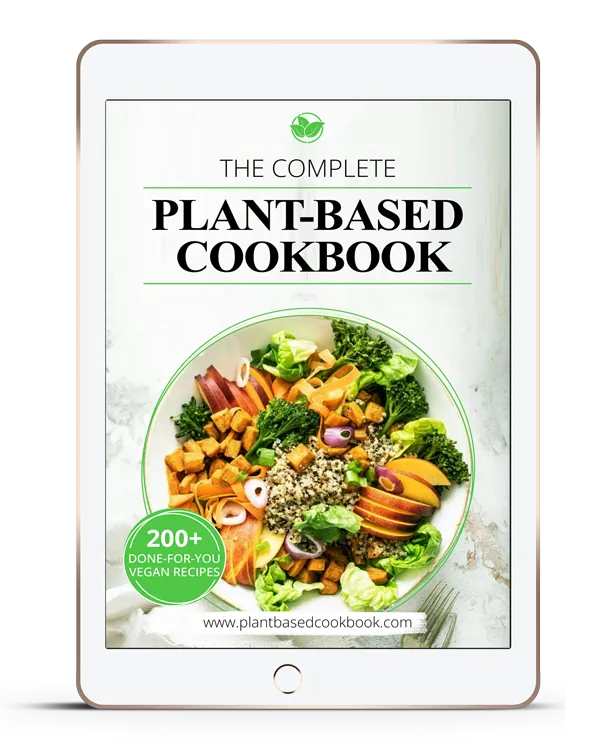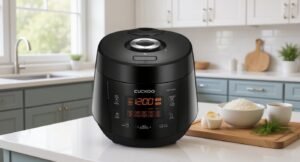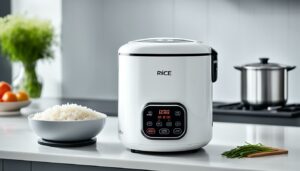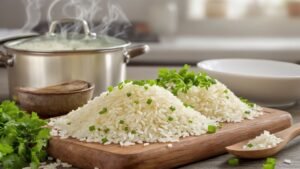One of the most common questions I get asked is: Can I cook pasta in a rice cooker? Well, I am happy to report that cooking pasta in a rice cooker is an easy and efficient way to make your favorite Italian dish. The steps are straightforward and can be done in less than 10 minutes. All you need is the right equipment, fresh ingredients, and, naturally, a great recipe!
If you are wondering if rice cookers are versatile appliances, then, of course, the answer is a resounding yes! Rice cookers are time-saving appliances that you can use if you are eating rice on a regular basis, but they are far from being a one-trick pony.
Once you have a rice cooker, you will want to experiment more and more with different recipes and you will learn tricks for how to get the best results in the easiest fashion. Another benefit of a tabletop rice cooker is that it is the best option for when your stove or the pots that you cook in are not available for you to use,e.g.,. when they are dirty, in use or even broken.
Table of Contents
ToggleOur Top Rice Cookers for Pasta
[amalinkspro_table id=”1305″ aff-id=”” new-window=”off” nofollow=”off” addtocart=”off” /]
As well as cooking rice (naturally!) you may be surprised to learn that your rice cooker is also able to cook different types of pasta as well. The process of cooking pasta is as easy as cooking rice. One thing though, make sure that your rice cooker will handle the amount of the pasta when it is cooked because its volume doubles when it is fully cooked.
Make sure to add the right amount of water. You should aim to cover the pasta with water and leave just a few centimeters extra on top, but if you really like to eat the pasta al dente, then you can simply fill the bowl with water. The main thing is that no matter how you like your pasta cooked, a rice cooker can cook a whole pasta dinner.
Cooking pasta in a rice cooker can be done with any model that follows the manufacturer’s cooking instructions. However, it is recommended to use Zojirushi or Panasonic rice cookers when making spaghetti or indeed, any other kind of pasta because they have induction heating systems that evenly distribute heat throughout the inner pot for better results.
How Do Rice Cookers Work?
Before we dig into how to cook pasta in a rice cooker, it’s worth spending a couple of minutes explaining how a rice cooker actually works.
As we know, rice cookers are kitchen appliances that are specifically designed to cook rice. They work by utilizing a combination of heat and moisture to ensure that the rice is cooked to perfection.
Inside a rice cooker, there is a heating element that provides the necessary heat to cook the rice. This heating element is usually located at the bottom of the cooker and is responsible for heating up the water or broth that is added to the rice. As the water heats up, it begins to boil and create steam.
The steam is then trapped inside the rice cooker, creating a controlled environment for the rice to cook in. The steam helps to evenly distribute the heat throughout the rice, ensuring that it cooks evenly.
- 6 CUPS COOKED: We’ve mastered the art of fluffy rice and hearty grains. Rice doubles in size, so this multicooker turns 3 cups of raw rice into 6 cups cooked – all with one touch.
- MINI RICE COOKER: It’s the perfect electric rice pot for individuals, couples, and small families. Use it to warm a side dish or bring dip to the party with 1.5 quarts of yum!
- NON-STICK POT: Remove the inner pot and lid for easy cleaning. Our BPA-free, premium coating helps prevent food from sticking, whether it’s rice, soup, cake, or something else.
- EASY TO USE: Pour ingredients inside, add water, and press the button. This small rice cooker automatically switches to ‘keep warm’ when rice is fluffy and ready to serve!
- PERFECT EVERY TIME: This non-stick pot has convenient measuring lines, and the appliance manual is filled with cooking tips. Just add rice first, then fill to the water line.
Also, the steam also helps to keep the rice moist and prevents it from drying out.
Most rice cookers also have a built-in thermostat that monitors the temperature inside the cooker. Once the rice reaches a certain temperature, the thermostat automatically switches off the heating element, signaling that the rice is done cooking. This ensures that the rice is not overcooked or burnt.
On the whole, rice cookers provide a convenient and foolproof way to cook rice, taking the guesswork out of the process and delivering perfectly cooked rice every time.
Cooking just pasta
You can cook just the pasta with the rice cooker and then make your sauce separately. To do this, you have to add water to the cooking bowl, usually between 6 to 8 cups of water for about half of a pound of pasta.
Add the pasta into the bowl with a pinch of salt and then transfer the pasta into the pan. You should stir the pasta a little so that it will not get stuck on the bottom of the bowl.
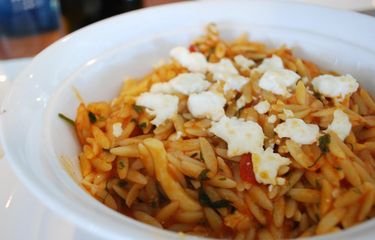
All you need to do then is put the lid down and let the cooker prepare the pasta for 8-12 minutes, depending on your taste. You should taste the pasta to see if it is done as it cooks. A simple way to test if the pasta is cooked is to throw a (small!) piece at the wall and if it sticks, then it’s good to go. (Just remember to take it off the wall :))
After it is cooked to your own taste, drain the water and separate the pasta. You should move quickly after this step and mix the pasta with the pasta sauce so it will not get dry.
Cooking a one-pot meal
There are a few cool ideas that you might want to try when cooking a full meal in a rice cooker. First of all, add some olive oil into the cooking bowl and let it warm up by covering the bowl with the lid.
After the oil gets heated up, you can go to the next step and add a few chopped or sliced vegetables (onions, garlic, peppers) and let them sauté in the oil. Of course, feel free to add whatever vegetables you like and you think will work for the dish in question (you can dice squash or why not, zucchini).
If you enjoy eating ground meat, meatballs, or any type of sausage, you can add some of them into the mix. After the mixture is sautéed, you can take the vegetables and the meat from the cooking bowl and place it on one side.
- FARFALLE PASTA & ROTINI PASTA: Variety pack of two unique and beloved Italian pasta shapes: BARILLA Farfalle and BARILLA Rotini
- BARILLA PASTA: Made with 100% durum wheat and water to deliver great taste and “al dente” texture every time
- CREATE DELICIOUS PASTA MEALS: Pair farfalle pasta and rotini pasta with a light tomato pasta sauce (with or without finely diced vegetables), a dairy-based pasta sauce, or an oil-based pasta sauce
- QUICK & EASY TO COOK PASTA: “Al dente” perfection in 7-8 minutes (rotini) and 11-12 minutes (farfalle)
- FREE FROM MAJOR ALLERGENS: This pasta is lactose, peanut, shell fish, fish, tree nut, and soy free; Suitable for vegetarians
You can then add your favorite type of pasta and some water into the cooking bowl. You can also add a little bit more olive oil. If you decided to use spaghetti, you probably want to break the strands in half, because otherwise, they will not fit in. Or, you can boil a kettle and soak the strands in a bowl until they are soft and pliable. When you want to cook about 7 ounces of pasta, you need to add about 2 cups of water.
After this, add some pasta sauce from a jar. You can use any type of sauce, depending on your preferences. To get closer to the final product, you want to add the mixture from the beginning back to the cooking bowl, over the pasta sauce.
Feel free to add any flavorings if you want to and cover the bowl and let the appliance do some more cooking on the whole mixture. You will notice that most cookers after they are done with the cooking process, will turn to their warm mode and will keep the food at a pleasant temperature; after all, you do not want to serve a cold meal.
How to Make Macaroni and Cheese in a Rice Cooker
Macaroni and cheese is a classic comfort food that many people enjoy. While traditionally it is made on the stovetop or in the oven, using a rice cooker can be a convenient and easy alternative. To make macaroni and cheese in a rice cooker, you will need macaroni noodles, water, milk, cheese, butter, and seasonings.
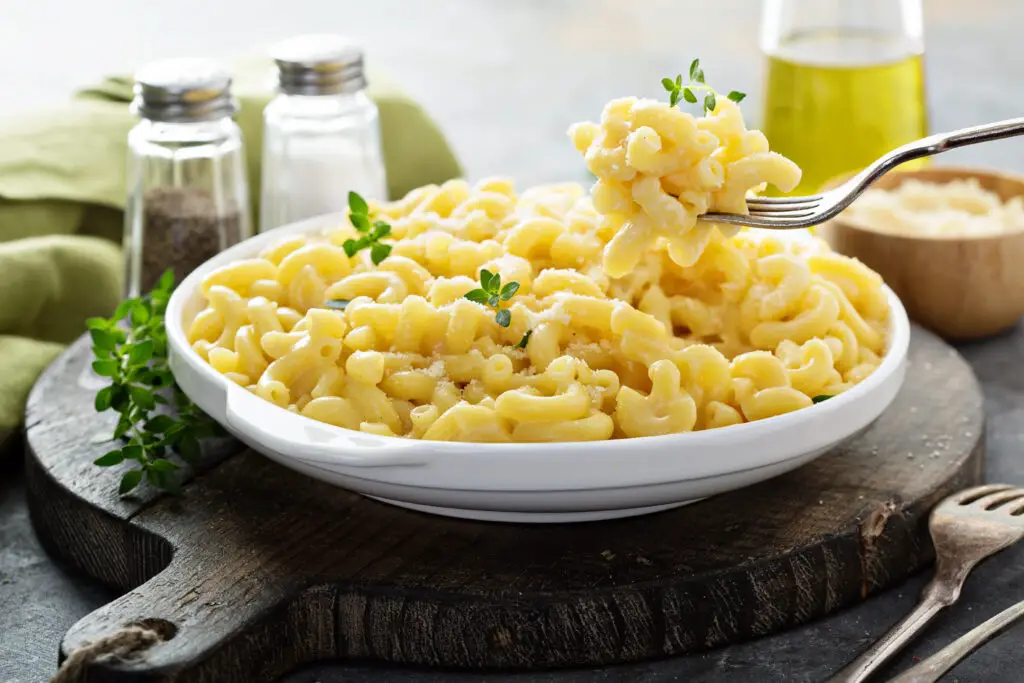
First, you will need to add the macaroni noodles to the rice cooker pot along with enough water to cover them. Close the lid and set the rice cooker to the cook or steam setting. Allow the noodles to cook for about 8-10 minutes, or until they are al dente. Once the noodles are cooked, drain any excess water and return them to the rice cooker pot.
Next, add the milk, cheese, butter, and seasonings to the pot with the cooked macaroni. Stir everything together until the cheese has melted and the ingredients are well combined. Close the lid and set the rice cooker to the warm setting. Allow the macaroni and cheese to sit in the rice cooker for a few minutes to allow the flavors to meld together.
I’ve written about this more on this blog post, if you are interested.
What are some common mistakes people make when cooking pasta in a rice cooker?
- 5.5-QT. PASTA POT: Elongated oval shape and generous capacity makes it easy to boil pasta of all shapes and sizes, from longer spaghetti and lasagna to shorter penne and farfalle noodles
- VERSATILE COOKING: Can also be used to cook a variety of meals and dishes such as vegetables, potatoes, soups, stews, rice and beans, seafood, meats, curries, and much more
- STRAINER LID: Pot’s lid twists and locks into place securely and features integrated straining holes for additional safety and convenience when draining excess water out of the pot
- STAY COOL HANDLES: Heat-resistant handles on both sides stay cool during the cooking process to offer a firm and comfortable grip at all times
- HIGH-QUALITY CONSTRUCTION: Made from durable aluminum with a PFOA-free nonstick interior that distributes heat evenly and offers an excellent mess-free release while making clean up easy after use
Some common errors when cooking spaghetti in a rice cooker are not following the instructions found on the user manual, using too much sauce or oil, and waiting for an extended period of time before taking out the noodles. Be sure to read your rice cooker’s instructions carefully so you will know when it is done cooking. If you notice that the spaghetti is still too hard for your liking, you can add a few more minutes to the cooking time.
Do I need to use the lid of my rice cooker?
You do not have to use your rice cooker’s lid when cooking pasta. However, it is recommended that you cover the pot with aluminum foil before placing it on top of the machine’s inner pan. Make sure there are no holes in the foil.
Is it necessary to add water?
You do not need to add any additional water for cooking spaghetti or other types of pasta noodles, except if specified by your particular rice cooker model’s instructions manual. The size and quantity of ingredients will cause enough liquid (from the sauce) to mix with the starch in the noodles, which results in a perfect pasta dish.
Can I reheat pasta?
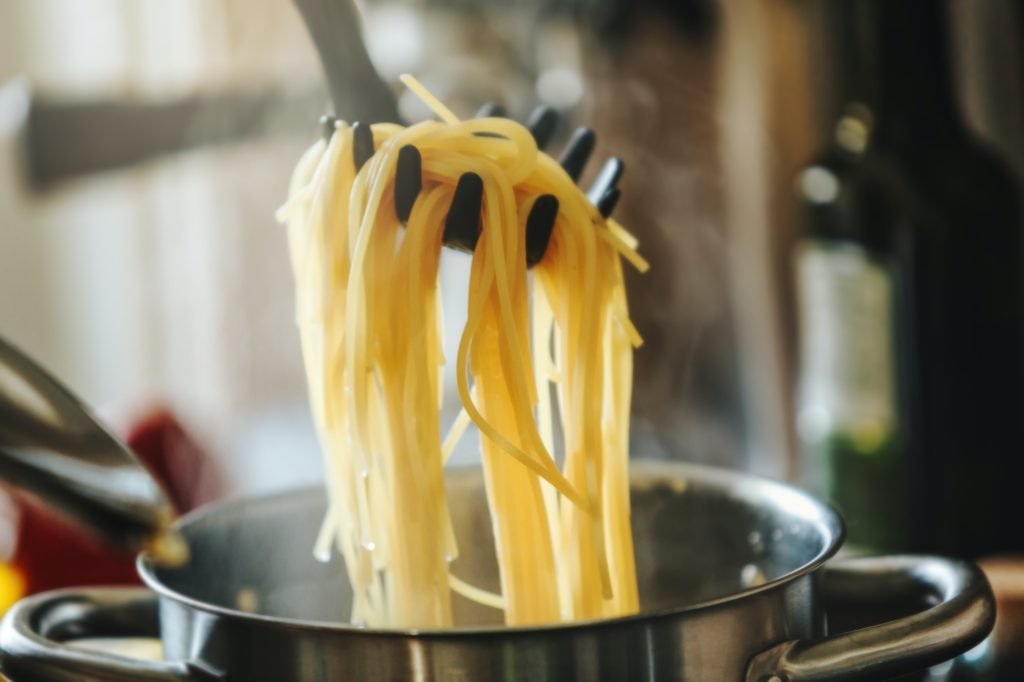
You should never reheat spaghetti or other types of noodles that have already been cooked and stored in the refrigerator overnight unless you are planning to eat them within a couple of hours after cooking. This is because when these kinds of food items are reheated, they lose nutritional value and may cause health problems. However, if you think it’s safe to do so then reheating cooked pasta is easy and only requires a few steps:
- remove leftovers from the refrigerator;
- place inside a microwave-safe dish or bowl;
- add some milk, oil or butter for added flavor/richness before microwaving on high heat for about a minute;
- stir and taste, adjusting the ingredients as needed before serving.
How long should I cook pasta in a rice cooker?
The right cooking time for most pasta, even spaghetti, in a rice cooker is around 20 minutes. You can also check if the noodles are ready by taking one out of the pot and cutting it into smaller pieces to see whether or not it’s cooked through. If you notice that the pasta is still too hard for your liking, you can add a few more minutes to the cooking time. Once it’s ready, you can then pair it up with your favorite topping – here’s a great recipe for spaghetti sauce with ground beef – a true classic.
How do I know if my rice cooker has reached its boiling point?
To check whether or not your rice cooker’s water reached boiling point (100°C/212°F), place one drop of water on the surface of the pan. If it quickly evaporates or you hear a sizzling sound, then your rice cooker is ready for cooking pasta noodles.
How long can spaghetti be stored in the refrigerator?
Spaghetti should not stay for more than a couple of days in your fridge because it will become dry, tough or mushy after sitting too long at room temperature. Be sure to store leftover pasta noodles inside an airtight container to avoid absorbing other food odors.
Conclusion
Having an innovative appliance like a rice cooker will bring many benefits to your home. You will notice in time that an appliance like this is very versatile and will help you with cooking rice and other meals, too. So, we have confirmed that Rice cookers can cook pasta on their own and pasta dishes, too. If you want to find out how to cook other great (non-rice) dishes in your rice cooker then why not read my other posts such as how to cook oatmeal in a rice cooker, or how to cook buckwheat in a rice cooker. You will be amazed at just how versatile these devices can be.
Your food will be kept warm after the cooking process is done and you will not have to serve your favorite meal cold. Invest in a good rice cooker and benefit from its versatility.
FAQs
Q: Can I cook pasta in a rice cooker?
Yes, you can cook pasta in a rice cooker. It is a convenient way to cook noodles without needing a separate pot on the stove.
Q: How do I make pasta in a rice cooker?
To make pasta in a rice cooker, simply add the desired amount of dry pasta to the cooker. Add enough water to cover the pasta completely. Close the lid and set the rice cooker to the “cook” or “cook mode” setting. Let the pasta cook until it is al dente, which means it should still have a slight bite to it. Drain the pasta and it is ready to be served.
Q: Can I make mac and cheese in a rice cooker?
Yes, you can make mac and cheese in a rice cooker. It is a popular recipe that is easy to prepare using a rice cooker.
Q: How do I make rice cooker mac and cheese?
To make rice cooker mac and cheese, start by adding the desired amount of dry macaroni to the rice cooker. Add enough water to cover the macaroni. Close the lid and set the rice cooker to the “cook” or “cook mode” setting. Let the macaroni cook until it is al dente. Drain any excess water from the rice cooker. Add cream cheese and cheddar cheese to the cooked macaroni and stir until the cheese is melted and the macaroni is coated. Serve hot.
Q: Can I cook spaghetti in a rice cooker?
Yes, you can cook spaghetti in a rice cooker. It is a convenient way to cook spaghetti without needing a stove or large pot.
Q: How do I cook spaghetti in a rice cooker?
To cook spaghetti in a rice cooker, break the spaghetti noodles in half and add them to the rice cooker. Add enough water to cover the noodles. Close the lid and set the rice cooker to the “cook” or “cook mode” setting. Let the noodles cook until they are al dente. Drain any excess water from the rice cooker. Serve with your favorite pasta sauce or toppings.
Q: Can I use a rice cooker as a multi-function appliance?
Yes, many rice cookers have additional functions such as steaming, slow cooking, and even making soups or stews. Check the user manual of your rice cooker to see if it has any additional features or settings.
Q: How do I make rice cooker mac and cheese recipe?
To make rice cooker mac and cheese recipe, add the desired amount of dry macaroni to the rice cooker. Add enough water to cover the macaroni. Close the lid and set the rice cooker to the “cook” or “cook mode” setting. Let the macaroni cook until it is al dente. Drain any excess water from the rice cooker. Add cream cheese and cheddar cheese to the cooked macaroni and stir until the cheese is melted and the macaroni is coated. Serve hot.
Q: How do I make rice in a rice cooker?
To make rice in a rice cooker, rinse the rice under cold water until the water runs clear. Add the rinsed rice to the rice cooker and add water according to the rice cooker’s instructions. Close the lid and set the rice cooker to the “cook” or “cook mode” setting. Once the rice cooker switches to the “keep warm” setting, it’s done. Let the rice sit for a few minutes before fluffing it with a fork and serving.
Q: How do I make rice cooker mac?
To make rice cooker mac, add the desired amount of dry macaroni to the rice cooker. Add enough water to cover the macaroni. Close the lid and set the rice cooker to the “cook” or “cook mode” setting. Let the macaroni cook until it is al dente. Drain any excess water from the rice cooker. Add cream cheese and cheddar cheese to the cooked macaroni and stir until the cheese is melted and the macaroni is coated. Serve hot.
Q: Should I add salt when cooking pasta in a rice cooker?
Yes, it is recommended to add some salt when cooking pasta in a rice cooker. This will help enhance the flavor of the pasta while it cooks.
Last update on 2025-09-26 / Affiliate links / Images from Amazon Product Advertising API





